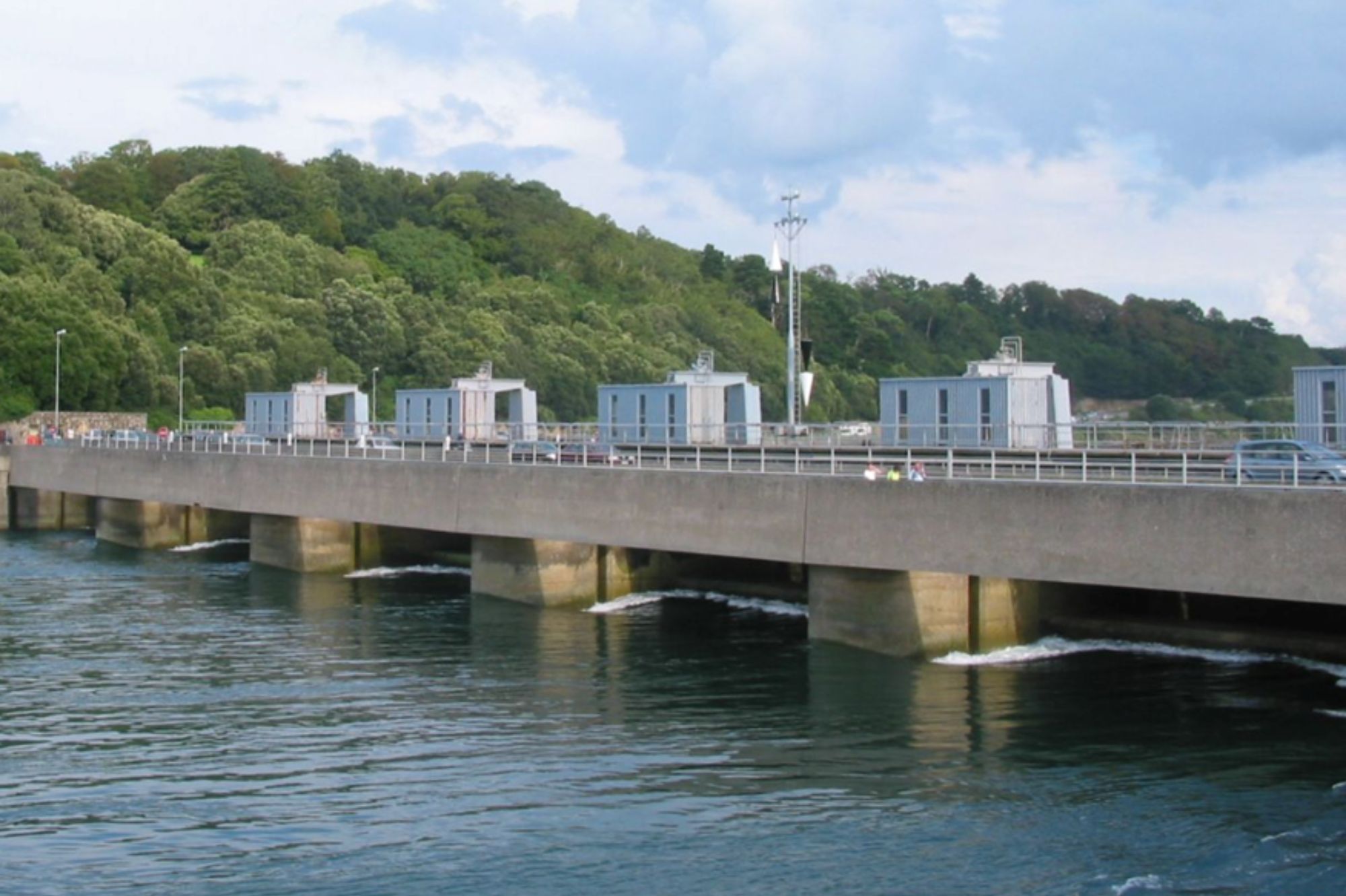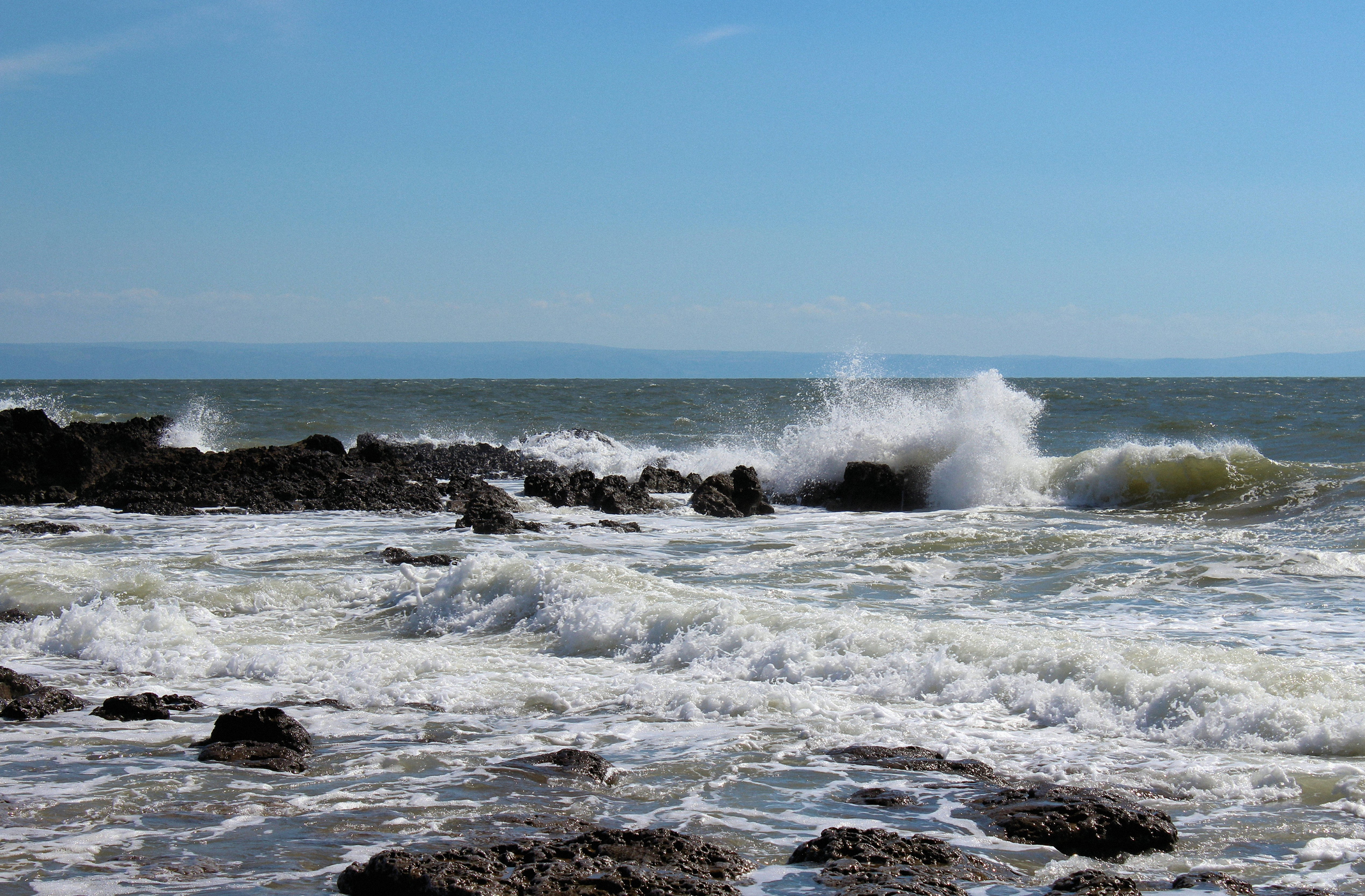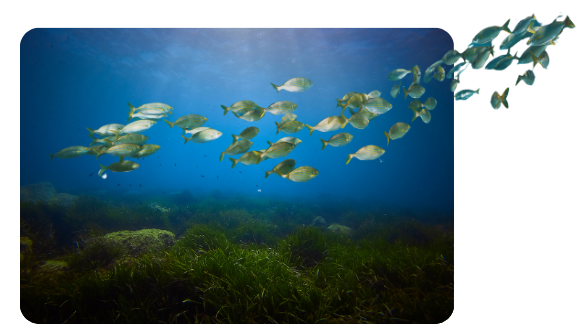Story
Communities hold the key to tidal energy projects, new study finds
02 October 2025
A new study shows that gaining deeper understanding of the drivers behind public attitudes to renewable energy is the key to minimising opposition to deployment.

Image: Tidal power plant on the estuary of the Rance River, Bretagne, France
Tidal energy has the potential to provide up to 11% of the UK’s electricity demand – a predictable, renewable source that could play a crucial role in meeting net zero targets. But a new PML-led study shows public engagement and buy-in are just as important as technical progress in determining whether tidal developments reach deployment or not.
The study, led by PML’s Andrew Edwards-Jones, explores how residents of coastal communities perceive tidal energy, and what values shape their acceptance of new developments.
‘Lack of public acceptance can act as a barrier to [the uptake of tidal energy projects] and deployment of renewable technologies has frequently been marked by public opposition at the local level.’
Focusing on three coastal towns alongside the Bristol Channel – an area with one of the world’s largest tidal ranges and a long history of proposed tidal projects – and building on an earlier large-scale survey of 960 residents, the team invited participants to take part in a more in-depth study, using an innovative method called photo-elicitation.
Did you know?
As the Moon orbits the Earth, its gravity pulls everything on Earth towards it, including the sea, and this moving water causes two high tides and two low tides each day in most places. A ‘tidal range’ is the vertical difference between high tide and low tide, and they can be shaped by both the Moon and Sun’s gravitational pull, in addition to other factors including the shape of coastlines and sea beds, and local ocean dynamics. Narrow bays, in particular, can amplify tides into dramatic rises and falls.
The Bristol Channel has one of the largest tidal ranges on Earth – second only to the Bay of Fundy in Canada – with extreme spring tides reaching over 14 metres. Its funnel-shaped coastline focuses and amplifies tidal bulges, creating powerful currents. Its tides can exceed 14 metres in height, can travel speeds of up to 13 miles per hour, and can reach over 25 miles inland into the Severn Estuary.
This extraordinary tidal power makes the Bristol Channel a hotspot of interest for renewable energy.

In this approach, 19 participants – including local residents, anglers and boat skippers – were asked to take photographs representing what mattered most to them about their local marine and coastal environment. These images then formed the basis of interviews about how their perceptions of tidal energy might be affected by those values.
This method encouraged participants to talk about their connections to place, wildlife, and community in their own terms, often surfacing deeper values and concerns than conventional questionnaires capture. And, to strengthen the analysis, interview insights were combined with quantitative survey data, allowing the team to compare participants expressed values with broader patterns in awareness, perceived importance, and levels of support for tidal energy.
Researchers discovered the following key findings:
- Broad support for tidal energy and renewable energy: Participants were generally positive about tidal energy, recognising its sustainable and reliable nature. Even when concerns arose about wildlife, recreation, or noise, not one person said they would oppose a local tidal development – and grappling with such trade-offs often actually deepened their support.
- Balancing trade-offs: residents weighed personal and community interests – such as fishing, tourism, and recreation – against wider concerns such as climate change and renewable energy. This mix of self-interest and altruism shaped their views.
- Wildlife and environment as priorities: the biggest influence on attitudes was concern about impacts on marine life and coastal environments. For acceptance, developers must demonstrate clear steps to avoid and mitigate ecological harm.
- Sense of place matters: people’s views were often rooted in personal connections to coastlines, from childhood holidays to daily walks. Enabling the recognition of these deep emotional and cultural ties should be a consideration within project planning.
- Information and engagement are essential: Some participants admitted limited knowledge of tidal energy yet were still enthusiastic due to wider concerns of climate change. Many stressed the importance of accessible, transparent information to help communities form clear views.
- Conditional acceptance: support was strong but not unconditional, depending on projects committed to minimising environmental harm and respecting community values.
- Policy relevance:such insights can inform processes like the UK’s Marine Plans, which require consideration of social and environmental values. Embedding local perspectives into decision-making could reduce conflict and support renewable expansion.
Although the UK public generally supports renewable energy, opposition often emerges at the local level. This study shows that engaging communities in meaningful ways – not just through abstract surveys, but by listening to what they value in their environment – is key to building trust and gaining lasting support.
As lead author, Edwards-Jones, explains:
“National-level support for renewables is high, but to enable a smooth transition at local and regional levels, we need to understand what really matters to communities. Our study shows that taking time to listen to those values, especially concerns about wildlife and local environmental change, is key to gaining public trust and support.”
“This qualitative, people-centred approach provides developers and decision-makers with practical insight into how to design and communicate tidal energy projects in ways that align with community values. By doing so, renewable energy can move forward with fewer conflicts and stronger public backing.”
Related information
This research was funded with thanks to the UK Energy Research Centre (UKERC).
